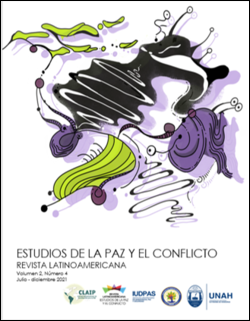Peacebuilding, which peace? Discussion on narrowing the concept of peace in UN peacebuilding operations
DOI:
https://doi.org/10.5377/rlpc.v2i4.11472Keywords:
Peacebuilding, liberal peace, criticismAbstract
On the international stage, the concept of peace was often conditioned on how international actors were dealing with conflicts. During world wars the goal was to maintain peace between the powers. In this context, peace was synonymous with security. During the Cold War, in a context of diminishing conflicts between states and increasing conflicts within states, the prevailing concept of peace was liberal peace. Liberal peace focuses on structural reform of states whose failures have created the conditions for conflict to arise. For critical literature, liberal peace is a narrow concept of peace, as it imposes peace from "top to bottom" and ignores important elements such as relationships. In view of these discussions, this article aims to discuss the problem of narrowing the concept of peace within the liberal peace-building approach. Firstly, what is "peace" will be debated. Secondly, the emergence and defence of the concept of liberal peace on the international stage will be examined. And finally, the critical perspective that brings the discussion about the essence of building peace based on relationships will be addressed.
Downloads
941
HTML (Português (Brasil)) 126
XLM (Português (Brasil)) 30
EPUB (Português (Brasil)) 112
Downloads
Published
How to Cite
Issue
Section
License
The journal's contents are published under a Creative Commons Attribution 4.0 license (CC BY 4.0). This license allows third parties to share (copy and redistribute the material in any medium or format) and adapt (remix, transform and create from the material for any purpose, including commercial), as long as the authorship and first publication in this journal (Revista Latinoamericana Estudios de la Paz y el Conflicto, Universidad Nacional Autónoma de Honduras - Consejo Latinoamericano de Investigación para la Paz, DOI of the work) is acknowledged, a link to the license is provided and it is indicated if changes have been made to the original. The terms of the license are available online at http://creativecommons.org.




